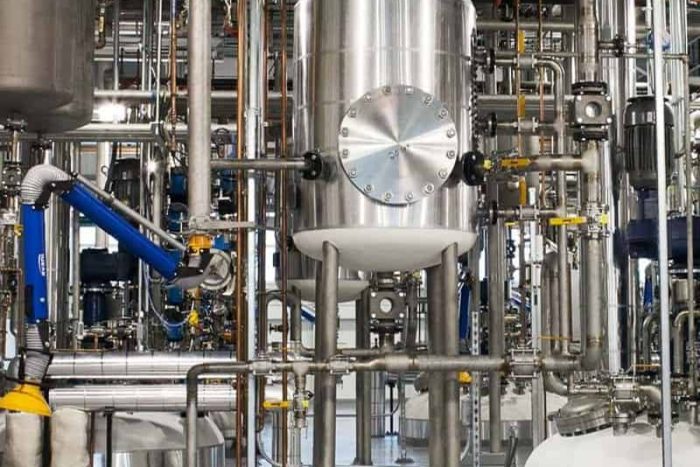Advanced ceramics excel in acid, alkaline, and saltwater settings—where metal parts often fail. Discover how ceramic corrosion resistance reduces costly downtime and extends component lifespans in demanding industrial conditions.
Corrosion resistance refers to a material’s ability to withstand chemical attack or deterioration when exposed to corrosive agents—including acids, bases, salts, or oxidizing environments. Unlike metals, which can rust or corrode over time, advanced ceramics often maintain their structural integrity, dimensional stability, and surface finish even under prolonged chemical exposure.

Why It Matters:
Reduced Maintenance & Downtime
Corroded parts lead to leaks, process contamination, or system failures. Using corrosion-resistant ceramics minimizes unplanned shutdowns and expensive repairs.
Longer Service Life
By resisting pitting, oxidation, and chemical degradation, ceramic components can maintain functionality for years in harsh environments—saving on frequent replacements.
Improved Process Purity
In industries like semiconductors, pharmaceuticals, or food processing, corrosion can introduce contaminants. Ceramics help keep your production lines clean and consistent.
Higher Efficiency & ROI
With fewer disruptions and longer-lasting parts, you get better return on investment while optimizing throughput and product quality.
Chemical Inertness
Advanced ceramics often rely on covalent or ionic bonds, making them less reactive than metals and more stable in corrosive environments.
Dense & Non-Porous Microstructure
Manufacturing processes like hot isostatic pressing (HIP) minimize pores or microcracks that could allow corrosive agents to penetrate.
Oxide Layers & Passivation
Certain ceramics (e.g., alumina, SiC) form thin protective oxide layers, further preventing chemical reactions with external media.
Immersion Tests (ASTM G31)
Salt Spray / Fog Test (ASTM B117)
Electrochemical Techniques (Potentiodynamic Polarization)
Below is a representative table of common ceramics used for corrosion resistance. Actual performance may vary by purity, composition, and processing route.
| Material | Corrosion Resistance | Common Corrosive Media Handled | Density (g/cm³) |
| Zirconia (ZrO₂) | Very Good | Mild acids, moderate alkaline solutions | 5.6 – 6.1 |
| Alumina (Al₂O₃) | Good | Acidic & neutral environments | 3.8 – 4.0 |
| Silicon Nitride (Si₃N₄) | Good to Very Good | Corrosive gases, molten metals | 3.1 – 3.3 |
| Silicon Carbide (SiC) | Excellent | Acids, alkalis, hot gases | 3.1 – 3.2 |
Key Takeaways:
Still unsure which material is best? Get a free recommendation.
Chemical Processing Equipment
Oil & Gas Industry
Semiconductor & Electronics
Food & Beverage / Pharmaceutical
Challenge:
A chemical plant faced frequent corrosion in stainless steel pump impellers exposed to strong acids and abrasive particles. Replacing parts every few months ballooned maintenance costs and risked unplanned downtime.
Solution:
Switching to silicon carbide ceramic impellers, engineered for both corrosion and wear resistance.
Outcome:
Explore More Case Studies or Contact Us to discuss a solution tailored to your industry.
We deliver comprehensive solutions for corrosion-resistant ceramic components—covering everything from material selection to final inspection and logistics.
Material Engineering & Custom Formulations
Advanced Forming & Sintering
Precision Finishing & Quality Control
Consultative Approach
Ceramics often surpass even the best alloys in resisting pitting or chemical breakdown—especially under extreme acid/base conditions. Metals can corrode, while ceramics remain inert, provided you choose the right ceramic grade for your environment.
While ceramics are typically more brittle than metals, toughened grades (like zirconia-toughened alumina) strike a balance between corrosion resistance and fracture toughness. Proper design and handling can mitigate brittle failures.
Upfront costs for ceramics can be higher, but longer service life and drastically reduced downtime often yield a better overall ROI. We can provide a cost-benefit analysis tailored to your application.
Ceramic or ceramic-like coatings (e.g., thermal spray) can improve corrosion and wear resistance on metals. However, fully ceramic parts generally offer a more robust and long-lasting solution in highly aggressive environments.
Our technical team can help evaluate your chemical composition, pH range, operating temperature, and pressure to match you with the ideal ceramic solution. Laboratory tests or pilot trials can further confirm compatibility.
Depending on complexity, lead times can range from 4 to 8 weeks. Prototyping might be faster if we have standard tooling or shapes available.
Still have more questions?
Send us an inquiry or check out our blog for deeper dives into ceramic materials and industry trends.
Upgrade your plant’s reliability and cut down on chemical-related part failures using our ceramic corrosion solutions. Contact us now to discuss your specific application and get a custom-tailored recommendation.

We will get back to you within 12 hours.
We will be in touch within 12 hours. Your intellectual property is 100% secure with us.